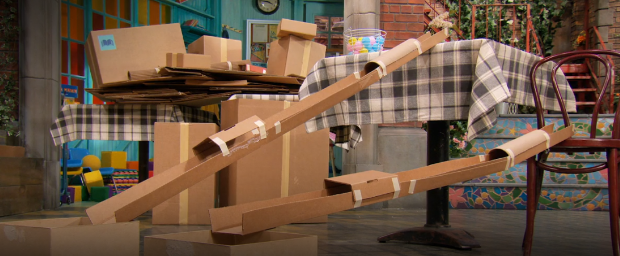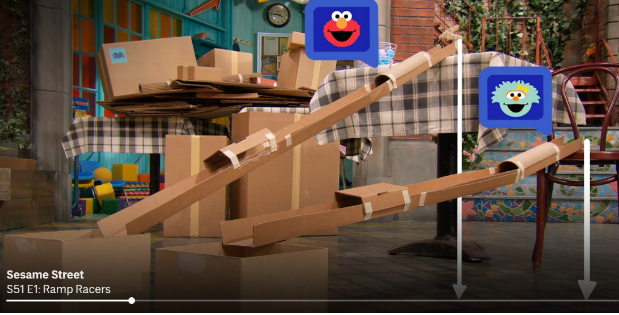Lessons in Experimentation from Sesame Street
A few months ago, I was watching Sesame Street with my four-year-old son. The Sesame Street team was building two cardboard ramps for Elmo and Rosita to race ping pong balls. After the first race ended, everyone celebrated Elmo’s victory – but Rosita wanted to know why Elmo’s ball was faster than hers.
Fortunately, there was a framework in place to answer these types of questions:
- I wonder…
- What if...
- Let’s try!

Elmo, Rosita, and Julia started talking about the differences in the two ramps. They were both made of cardboard, and they had the same ball roll down them. However, Julia noticed that Elmo’s ramp was higher than Rosita's.

This bit of knowledge helped Rosita form a hypothesis. If she built her ramp as high as Elmo’s, her ball just might go as fast as Elmo’s in the next race. From there, the team raised Rosita’s ramp to be the same size and they put this theory to the test.
Mission accomplished. Rosita and Elmo tied, all thanks to the Sesame Street team’s experiment.
The notion of “experimentation” may trigger different thoughts for different people. To some, an experiment involves scientists working in a lab. Other people will think of an artist who likes to change up the color, depth, or tone of their artwork to spark different reactions. And some people will envision a marketing team launching two ads for the same promotion to see what resonates most with their customers.
On the surface, these three hypothetical examples may seem extremely different, but they have one thing in common: they all follow the same basic experimentation framework that was outlined in Sesame Street.
- I wonder – The team is starting to define what the problem is. They draw on all they can see and even past experiences/experiments to create a solution.
- What if – The team creates a hypothesis to solve the problem. They walk through what they think they need to do to solve the problem.
Let's try! – The team implements their changes to see if that solves the problem. They run the experiment and then socialize the results.
Experimentation doesn't need to be a massive undertaking, or scary to start. This simple concept provides a framework for thinking and helps lay the foundation for testing in digital platforms with tools like Optimizely Web Experimentation. And the best part? It shows that getting started with experimentation doesn’t have to be complicated!

Comments